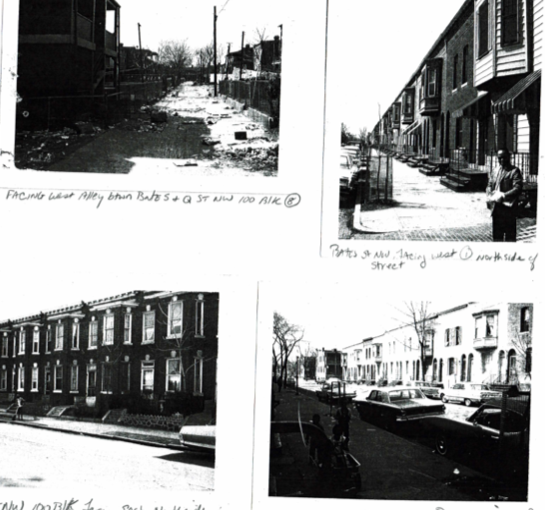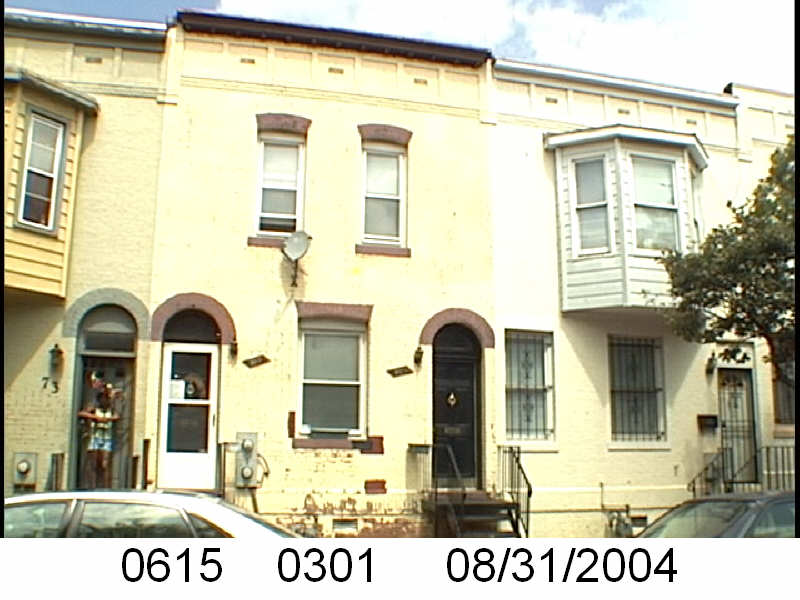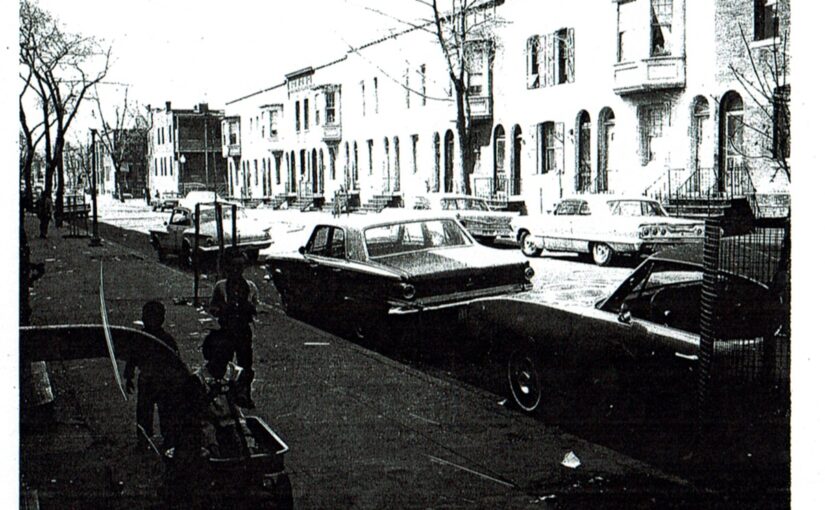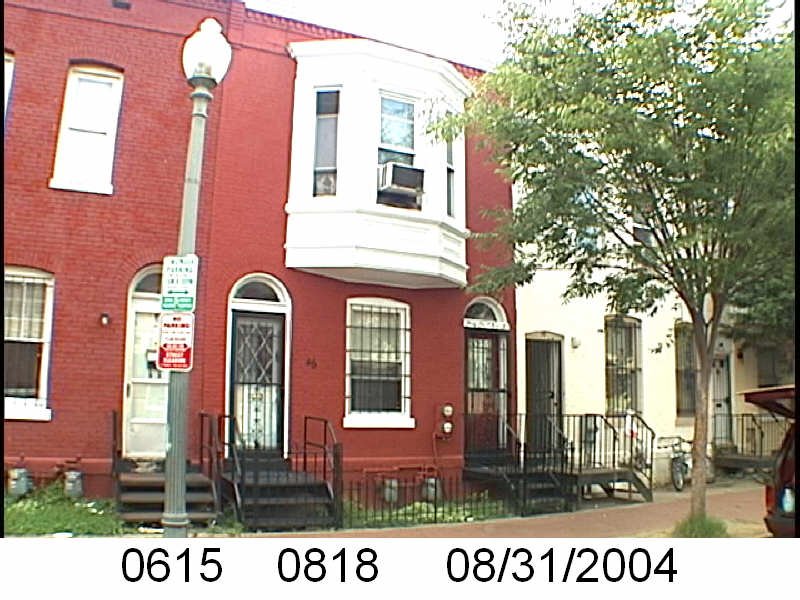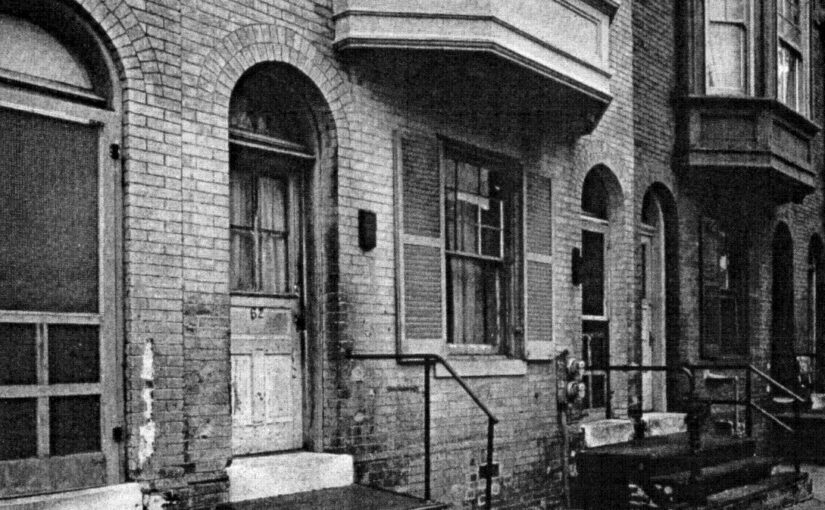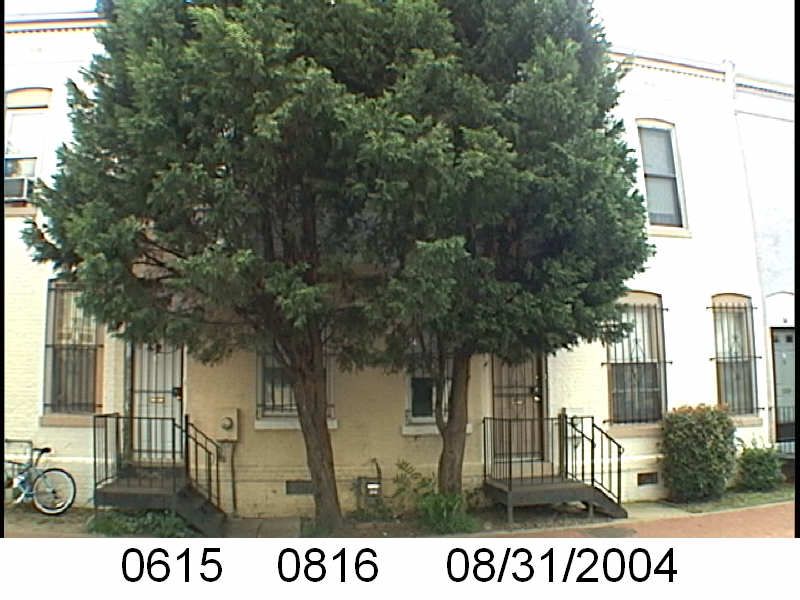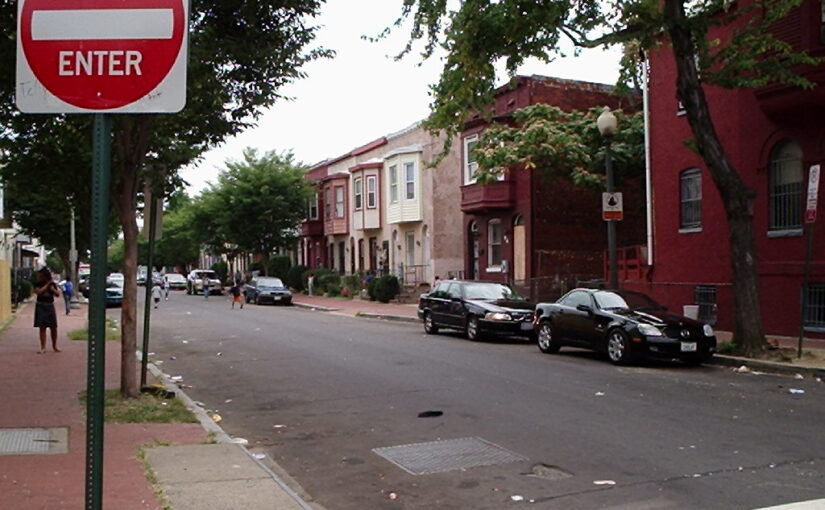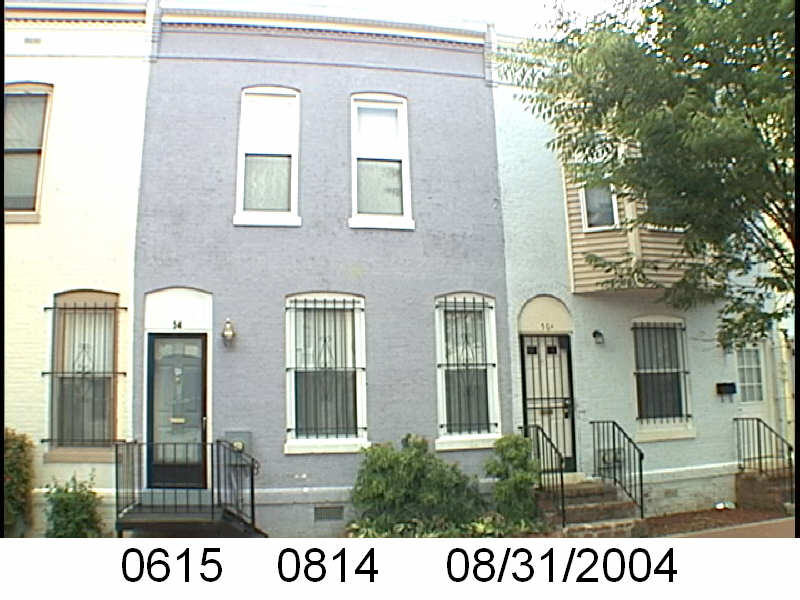The Washington Sanitary Improvement Company (WSIC) was a late 19th century charitable capitalism experiment that ended in the 1950s. This blog started looking at the homes that were supposed to be sold to African American home buyers, after decades of mainly renting to white tenants.
Looking at WSIC properties they tend to have a pattern where the properties were sold to a three business partners, Nathaniel J. Taube, Nathan Levin and James B. Evans as the Colonial Investment Co. for $3 million dollars. Those partners sold to African American buyers. There was usually a foreclosure. Then the property wound up in the hands of George Basiliko and or the DC Redevelopment Land Agency (RLA). Then there were the odd lucky ones who managed to avoid that fate.
Let’s see what happens with 67 Bates St NW:
- December 1950 (recorded Jan 26, 1951) Evans, Levin and Taube sold one-half of 67 Bates Street NW to Geneva M. Harrison.
- December 1950 (recorded Jan 1951) Mrs. Harrison borrowed $2,525 from Colonial Investment Co. favorite trustees Abraham H. Levin and Robert G. Weightman.
- February 1951 Evans, Levin, and Taube sold the other half of 67 Bates St NW to Marion Grayson and Catherine VM Smith, both married persons. Marion was a man.
- Feb 1951 Grayson and Smith borrowed $2,525 from trustees Abraham H. Levin and Robert G. Weightman.
- May 1954 Mrs. Harrison lost her half to foreclosure and Evans, Levin and Taube who regained ownership through an auction.
- April 1957 Grayson and Smith lost their half to foreclosure. Colonial Investment Co. leadership, Harry A. Badt, Evans, and Taube repossessed the property via an auction.
- April 1957, Harry and wife Jennie Badt transferred/ sold their interest in this and several properties to Nathan Levin’s survivors.
- March 1959 (doc# 1959019387) Badt, Evans, Taube, Nathan Levin’s survivors and their spouses sold 67 Bates St NW and other properties on the block to Sophia and George Basiliko.
- Between 1971-1972 Basiliko was released from three mortgages and the next document has the DC Redevelopment Land Agency (RLA) as the owner, so we are left to assume around 1970 Basiliko sold the property to RLA.
- June 1980 (doc #8000020294) the DC RLA sold/transferred this and other properties to BSA Limited Partnership. BSA is possibly short for Bates Street Associates. It is paired with doc #8000020221 a contract between DC RLA and BSA Ltd Partnership.
It was interesting that both units went into foreclosure and Colonial Investment Co. did not bother to resell them and then sold them to Basiliko. I’m 90% certain, without a document to prove it, that Basiliko sold it to DC RLA. Then it went from RLA to some version of the Bates Street Associates.
The name Geneva M. Harrison seemed familiar so I discovered she also bought 50 Bates Street NW . So who was Geneva M. Harrison? She was born August 24, 1915 and married to William A. (Buttercup) Harrison who died in 1948. That year’s city directory she was listed as living at 221 Q St NW and working as a maid for Washington Loan and Trust. In the 1950 census, she was still living at 221 Q St NW, but working as a dietician at a hospital. Notably, her 17 year old son William was also working at a hospital as a cook. There were several people living at 221 Q. There were her two daughters Lillian and Rosa (15 yo and 12), the before mentioned son, his 16 year old wife, their infant son William Jr. and a 50 year old roomer. She owned (for a time) 67 and 50 Bates Street and in 1973 she purchased 5129 H St SE, then sold it in 1978.
Grayson also seemed like a familiar name. It was but the people were different, just same surname. Then the question is why did Grayson and Smith buy a unit together? Looking up Marion Grayson, there is a record of Grayson marrying in 1947 a Barbara Varnetta Smith. She was the daughter of Clarence L. and Catherine V. Smith. So he bought a unit with his mother-in-law.
In 1950 Catherine Smith (nee Muse) was a 43 year old African American housewife living with her husband and three of their children at 415 New York Ave NW (where the YALE apartments sit now). Her husband Clarence worked as a gas station attendant and 19 year old daughter Jacqueline sold newspapers. Her other daughter Barbara was living with her husband’s family at 1137 8th St NW with her 1st husband Marion Grayson and infant son Sheldon. Marion was working for the Bureau of Engraving and Printing as a printers helper.


